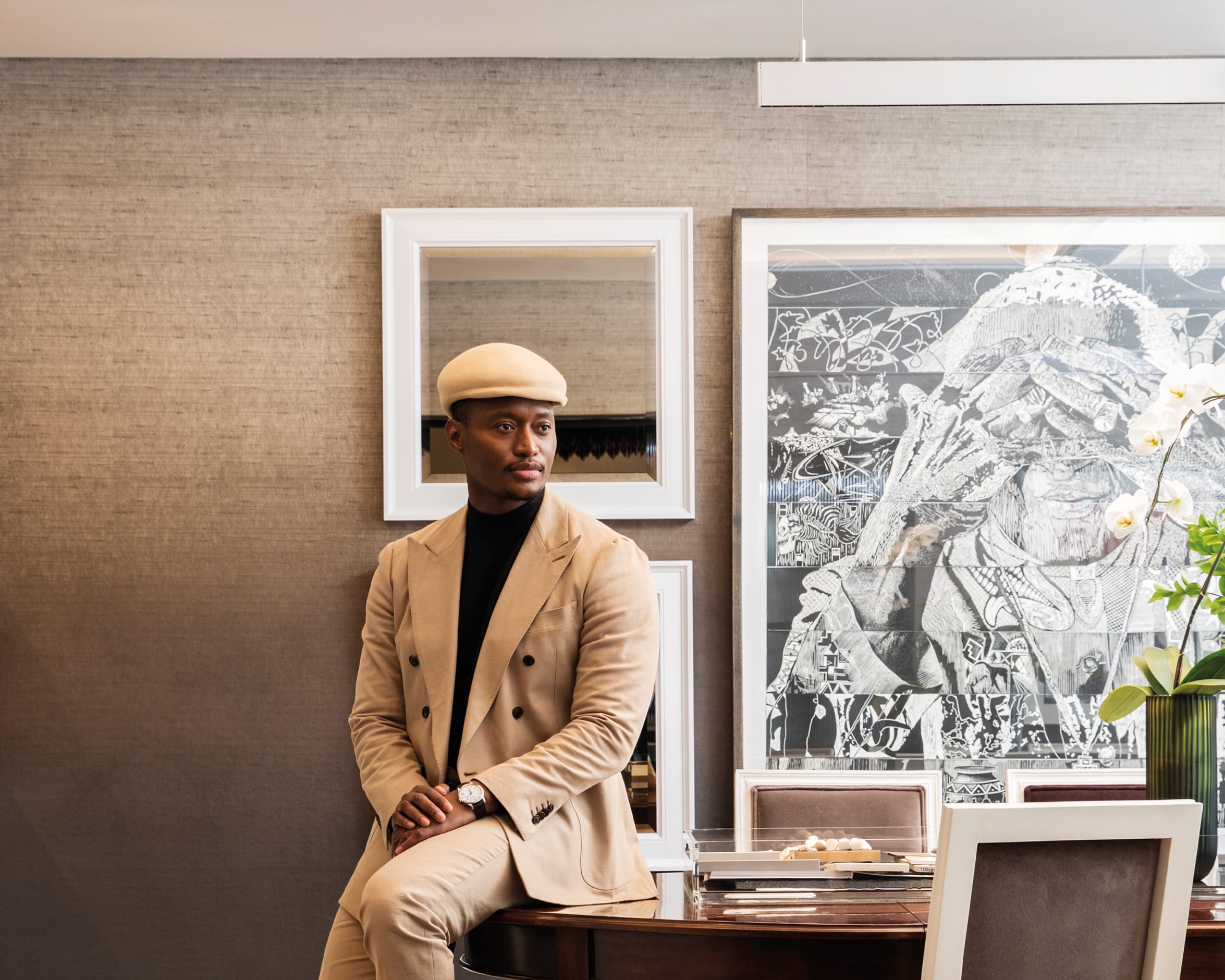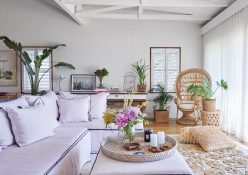Whether he’s conceptualising a hotel in the heart of Uganda or refurbishing the home of a South African celebrity, interior designer Donald Nxumalo is only satisfied with a project when his client can see themselves in the space that he’s created.
But that’s far from his only measure of success: well made, handmade, useful and beautiful are key concepts that he often repeats when discussing his designs. This ethos has earned him a loyal client base at his Kramerville studio, DNX Interior Design, over the past 12 years – not to mention projects across Africa. We sat down with him to find out more about his journey so far…
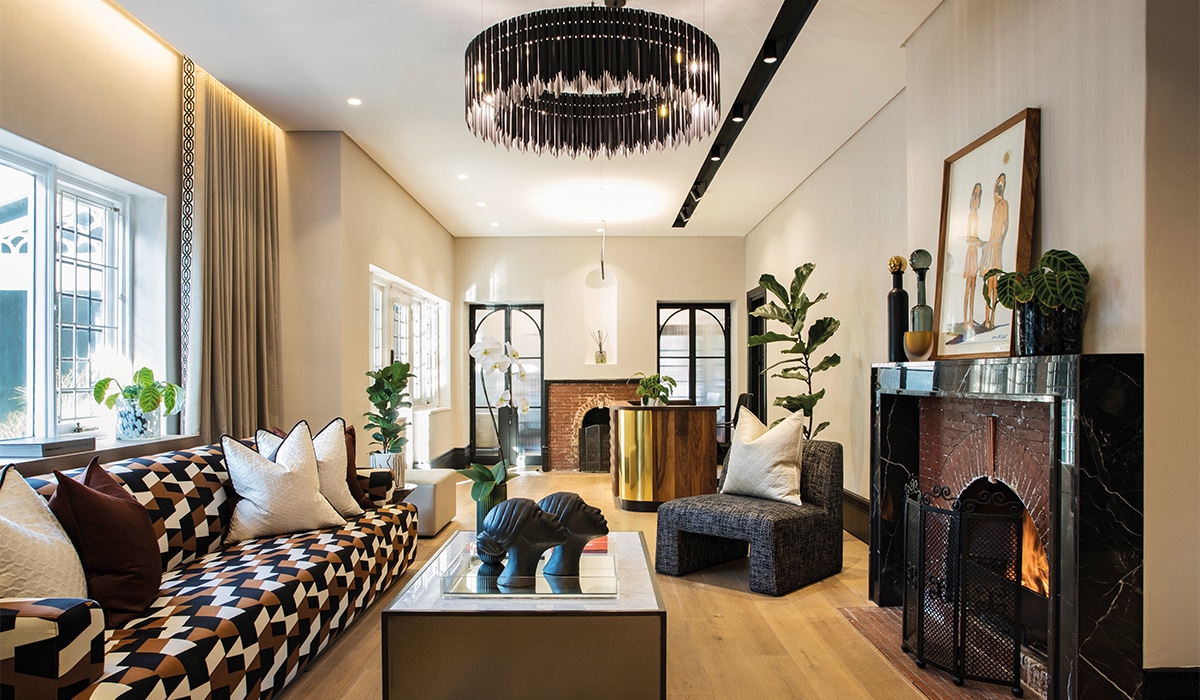
How did interior design come into your life?
I always knew that I wanted to be an interior designer. I’ve always loved it, so it gave me direction when I studied at the Tshwane University of Technology. I worked in a shop selling furniture – people would walk in and I’d help them choose a few pieces and fabrics according to a look or scheme.
I got to learn quite a lot about the industry, because so many decorators came into the store. But it also taught me about where furniture fits into people’s lives. It showed me that furniture is ultimately a way for people to express themselves and their ambitions. The home is an important place, and I wanted to help people put it together.
After a while, my internal compass told me it was time to make my next move. I wanted to start my own studio, but I needed a push. One day, a friend told me about a design competition on SABC 3 called #WinAHome. I entered and made it through all eight weeks of challenges – and won. This was back in 2014, when the internet was starting to be great but wasn’t everywhere yet, so the TV as well as press exposure got people talking.
I started my social media accounts to share photos of my designs, which was really amazing because I could put out something that was truly representative.
I could express myself in real time and get people’s reactions in real time – they could see something they liked online and call me immediately. You could be your own advocate and create your own community… I think it laid the foundation for my career.
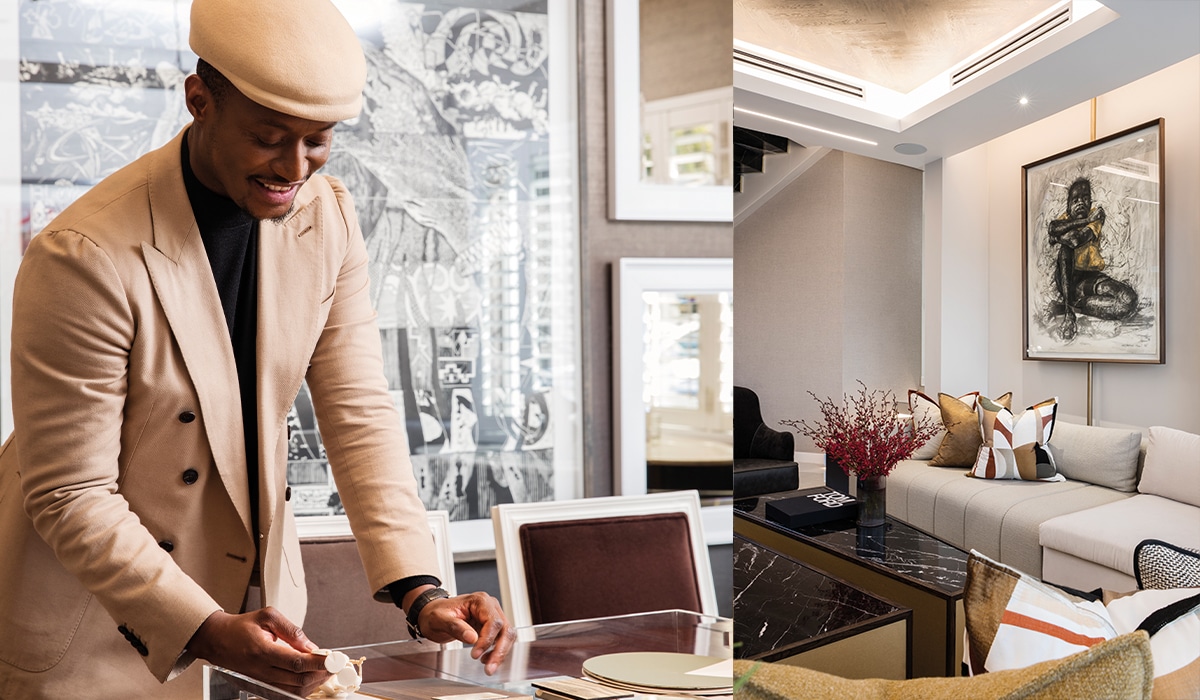
Which urban spaces have shaped your design philosophy and aesthetic?
I went to Hamilton Primary School in Pretoria, which was built in the late 1800s. The teachers were quite prescriptive about what kind of shoes they would allow inside because the tiles were so special. They took the time to educate us about what buildings mean to the heritage and culture of the city, and what that ultimately means for the economy and the people. They taught us that when we preserve what we have, we get a higher value from it. It means we care and, as a result, those things we care about last longer.
Although I didn’t recognise it then, that education played a part in getting me to value things simply because they had meaning. And what I do now, on a day-to-day basis, is give meaning to things. I strongly believe in sustainability, and that we should take the time to make things well. If we make them well, we will value them more and are less likely to dispose of them.
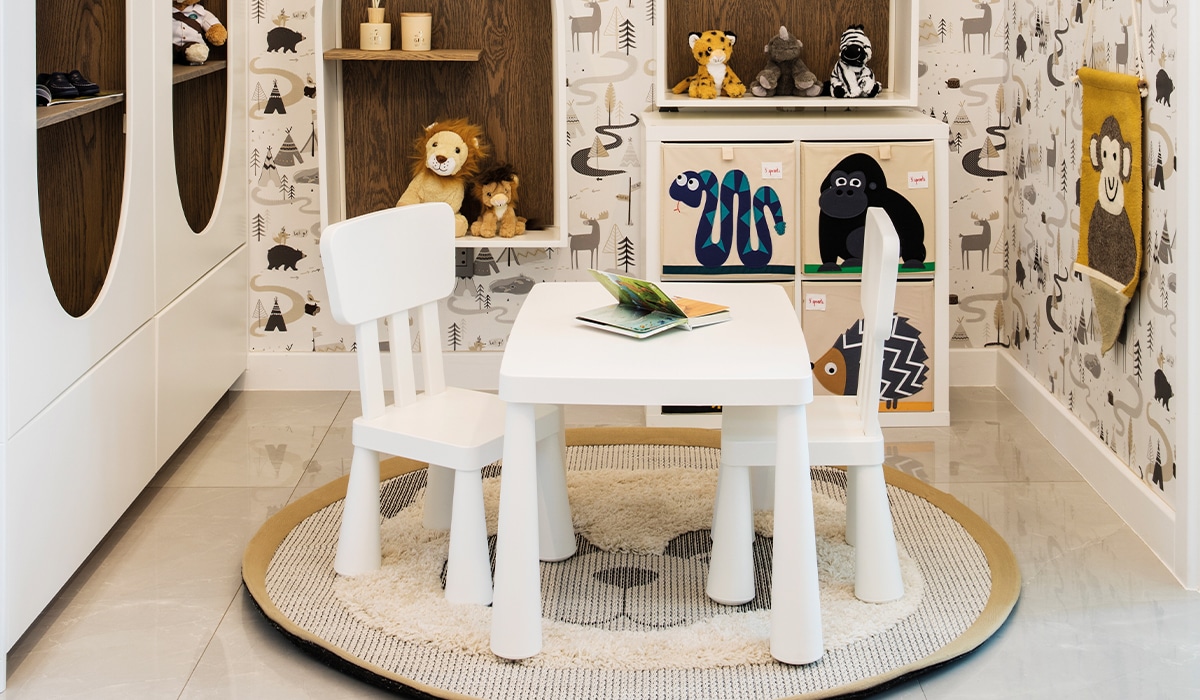
I believe that something is only beautiful if it’s useful and if it can be shared. There are so many urban examples of this. I am compelled to share them, protect them and reflect them in my work. One example is Morocco, and specifically the Yves Saint Laurent house and garden in Marrakesh. The use of cobalt blue, orange and indigenous plants is so strong and beautiful that it’s emotive. They’ve just used what they have, so it’s totally authentic.
That handmade quality can’t be replaced, and it’s something I’ve seen across Africa. I respect that humans are capable of that level of precision – to create something that people will look back on and wonder at because it’s a marvel. It inspires people to be better.
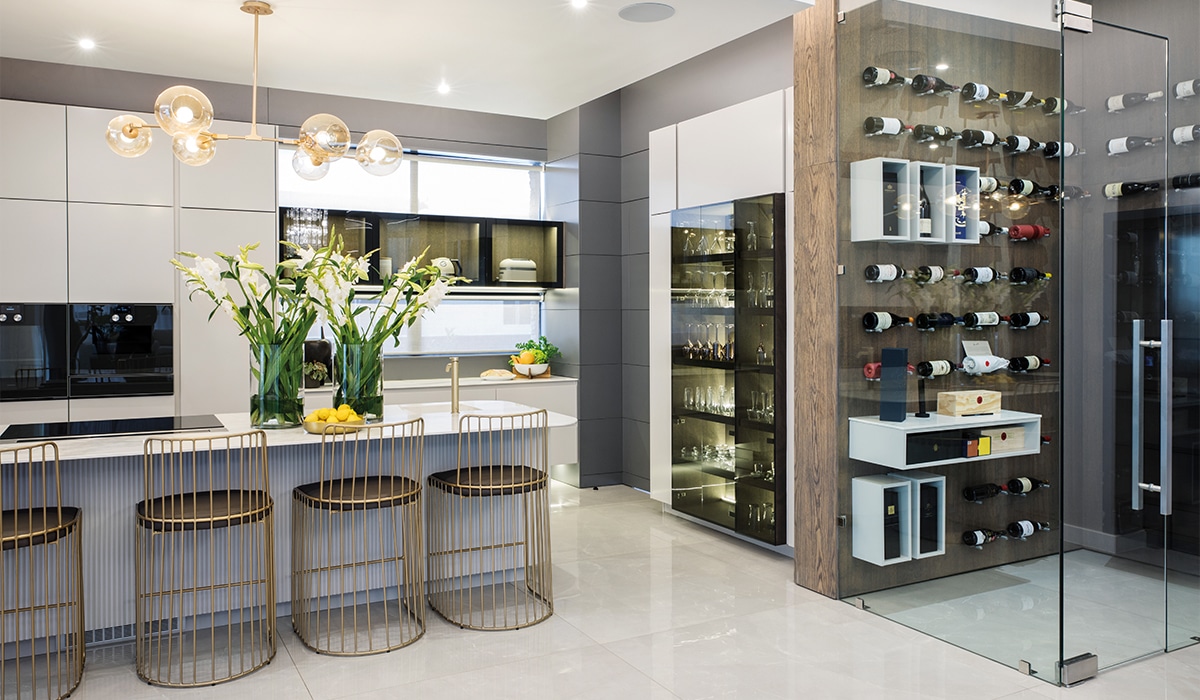
How has living in Joburg impacted your designs?
The way I design Joburg homes is different to other parts of the country, especially those at the coast. I have found that Joburg homes are a lot more exuberant and expressive because people are putting their best foot forward: the home is where we entertain and network. We really live as a community, so our homes are something we take pride in, and that reflect who we are. My own home is very layered, with objects from all over the world that have been given to me. I have an 18-seater dining table, so that tells you something!
There’s also a lot of colour and texture in Joburg homes, which I enjoy, because we as Africans are very expressive and not afraid of colour. I’m not shy when I design in Joburg! In Cape Town, for example, people want less visual clutter, a laid-back feeling and for the view to be the focus. In Joburg, there’s so much noise and light outside that we want to come home and settle into a sanctuary.
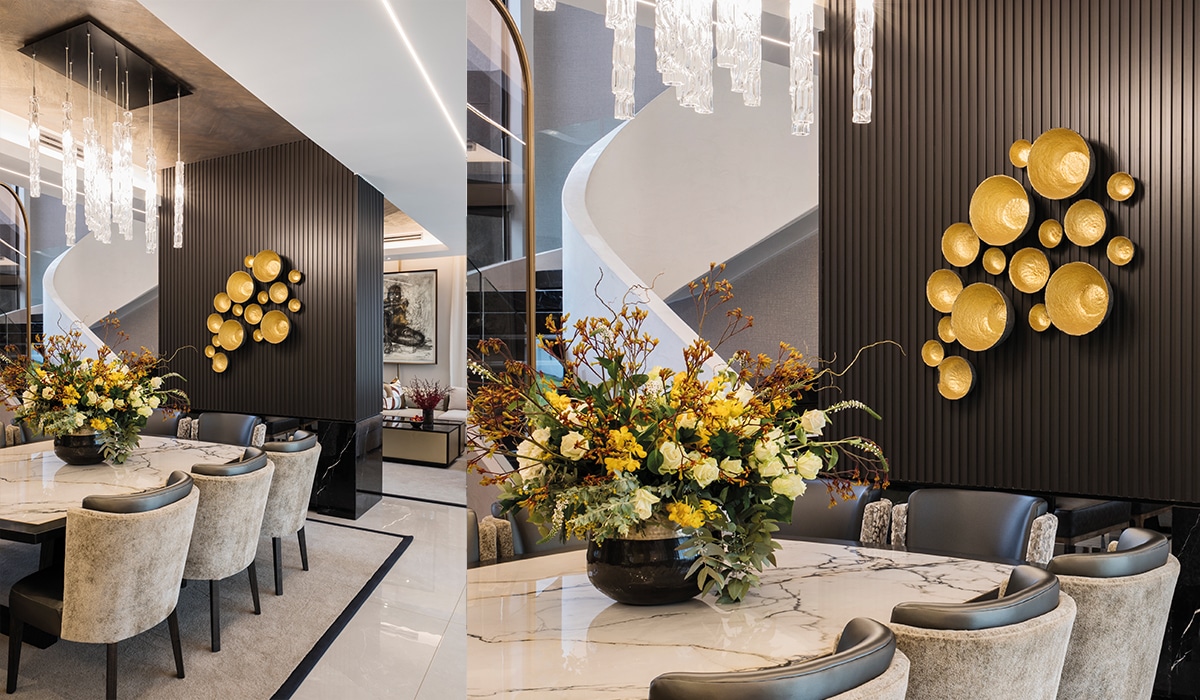
Any styling tips to take home?
Say ‘no’ more often than you say ‘yes’ to new objects. What you say ‘no’ to says a lot about you and your style. It also means that you can say ‘yes’ to the right things; otherwise you just keep acquiring stuff and soon enough you’ll need an entire storage facility! Ask yourself: Do I really love it? Should I really have it? Then you’ll have a home filled with things you truly love.
Words by: Christi Nortier
Photographs: Shutterstock, Supplied



